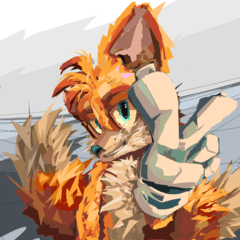Guide to Blending Modes: Part One
Hello! My name is Liz Staley and I’m a long-time user of Clip Studio Paint (I started using the program back when it was known as Manga Studio 4!). I was a beta-tester on the Manga Studio 5 program and for Clip Studio Paint, and I have written three books and several video courses about the program. Many of you probably know my name from those books, in fact. I write weekly posts on Graphixly.com and on CSP Tips, so be sure to come back every week to learn more Clip Studio Tips and Tricks from me!
When you’re first getting into digital art there are a lot of things you need to learn. Some of these things, like Blending Modes, are not intuitive and can be overwhelming for some digital artists. So in this two-part series, let’s take a look at each of the Layer blending modes in Clip Studio Paint and what they do so that you can incorporate them into your art!
In this article we will cover the following topics:
Normal Mode
Darkening Modes
Lightening and Glowing Modes
Let’s get to exploring blending modes!
Normal Mode
The “Normal” blending mode is the default blending mode. In this mode, there is nothing special happening. Fully opaque pixels of color will completely cover the pixels below them with no color mixing. The only way that colors change colors below them in normal mode is if they are slightly transparent.
The strips of color in the image below are on a layer with a Normal blending mode. Note that they completely obscure the image beneath.
This image will be our example for the rest of the blending modes for comparison.
Darkening Modes
The modes in the Blending Mode menu in the Layer palette are not in categories per se, so I am breaking them up into the categories I’ve seen a few other sources of this information break them into. Our first group are ones I’m calling “Darkening” modes - which darken the colors beneath them! These blending modes are good for shading, moody lighting effects, and some color adjustments.
The first color mode we will look at is called Darken, shown below.
The Darken blending mode compares the colors of the blending layer and the layer(s) below and then keeps the darker of the two colors. In the example above the three strips of color at the bottom have basically disappeared because they are almost always lighter than the colors of the illustration below them.
Let’s look at the Multiply blending mode next.
Multiply is the Blending Mode that most digital artists are familiar with. This is the mode most artists use when coloring a piece to provide shading. This mode takes the blending and base layers’ colors and multiplies them. In the case of pure black or pure white (our top and bottom stripes in the above example) the blending colors are either too dark in the case of black or too light in the case of white to cause a change.
Our next darkening color mode is called Color Burn.
This blending mode actually has roots in old-school film photography where prints would be “burned”, or over-exposed to light, in order to make them darker. In this mode the colors are darkened, with the saturation of mid-tones being increased. This mode also blends in the color of the blending layer.
Next on the list is the Linear Burn mode.
This mode is similar to Multiply, but produces darker and more saturated blended colors.
Finally we have the Subtract mode.
Subtract will “subtract” the blending layer color from the color below, making the final color darker.
Lightening and Glowing Modes
The following modes are suited for lightening areas or for creating special effects such as glowing lights.
Let’s look at Lighten first.
Lighten is the exact opposite of the Darken blending mode in that it compares the two colors and keeps the lighter of the two.
Next up is Screen.
Screen is the opposite effect of the Multiply mode. Depending on the luminosity of the blend layer, the base layer will be lightened. This results in a brighter blended color. This is a great mode to use for adding colored highlights.
Color dodge is next.
Color Dodge gives bright and highly saturated results. The colors of the base layer are lightened and then contrast is minimized.
A similar mode to Color Dodge is Glow Dodge, shown below.
This mode gives similar results to the previous, but the effect is much stronger in semi-transparent areas. So if you are painting in light effects with a soft brush, this is a good blending mode for achieving a glowing look!
Now let’s look at the Add mode.
The base colors are added to the blend colors, resulting in brighter colors.
Last up for this category is Add (Glow).
Similar to Glow dodge, the effects of this blending mode are stronger in semi-transparent areas.
Conclusion
Next time we will learn about the rest of the blending modes, so be sure to come back for that!
For more information on CLIP Studio Paint, please visit https://www.clipstudio.net/en or https://graphixly.com
















Comment